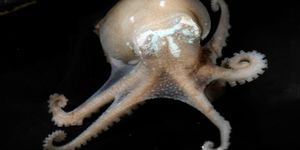Researchers have gotten one step closer to unraveling the highly complex series of processes that lead to an event critical to human reproduction. Called an "RNA helicase," an enzyme interacts with nearly 24 genes in a complex process that in turn produces piRNA molecules, which directly affect sperm production.

The study was supported by a Brody Family Fellowship, National Institutes of Health National Research Service Award fellowship F31HD081892, National Natural Science Foundation of China grant 31471228, Nanjing Medical University Startup Funding 2013RC02 and NIH grants GM072777 and HD069592.
In an article in the journal Genes and Development, University of Pennsylvania researchers P.Jeremy Wang, Zissimos Mourelatos, A. Vourekas, Qi Fu and Panagiotis Alexiou, along with colleagues Ke Zheng and Jing Ma of Nanjing Medical University and Ramesh Pillai of the European Molecular Biology Laboratory, reported that in studying molecular interactions in mouse testes they had found that nearly all RNA molecules that MOV10L1 bound with were precursors of piRNAs.
"This suggests that MOV10L16 is very specific in what it binds with. It's pretty much only interacting with this class of RNA precursors," said Wang.
The researchers also found that MOV10L1 binds preferentially at points on the RNA molecule that contain numerous guanine (G) nucleotides. These form "G quadruplexes" (G4s) which are particularly stable structures. "We think that the MOV10L1 complex is like a car moving along a single-stranded RNA. When it hits this G4 secondary structure, the complex cannot move any more so it pauses, which then allows another enzyme to cut in that location and release part of the (RNA) transcript for additional processing. MOV10L1 then uses its helicase activity to untie the knots of the G4, straightening it out and resolving the structure.
"This happens repeatedly along the RNA strand," said Wang. "This complex appears to present the long strand of the RNA to the nuclease (lysing enzyme) and initiates the first cut, which is important for piRNA genesis," added Mourelatos.
These sliced-off RNA fragments then become the piRNAs that directly mediate sperm production.
The team tested its conclusions by altering a test tube sample of MOV10L1, disabling an amino acid though to be critical for its activity. A control sample in another test tube behaved as expected while the altered sample could not.
The team is also interested in the implications of MOV10L1 for birth control. "If we block the interactions between MOV10L1 and its associated proteins, we may be able to disrupt this complex. And if you disrupt it, you would disrupt piRNA production. This could have a contraceptive effect," said Wang.










